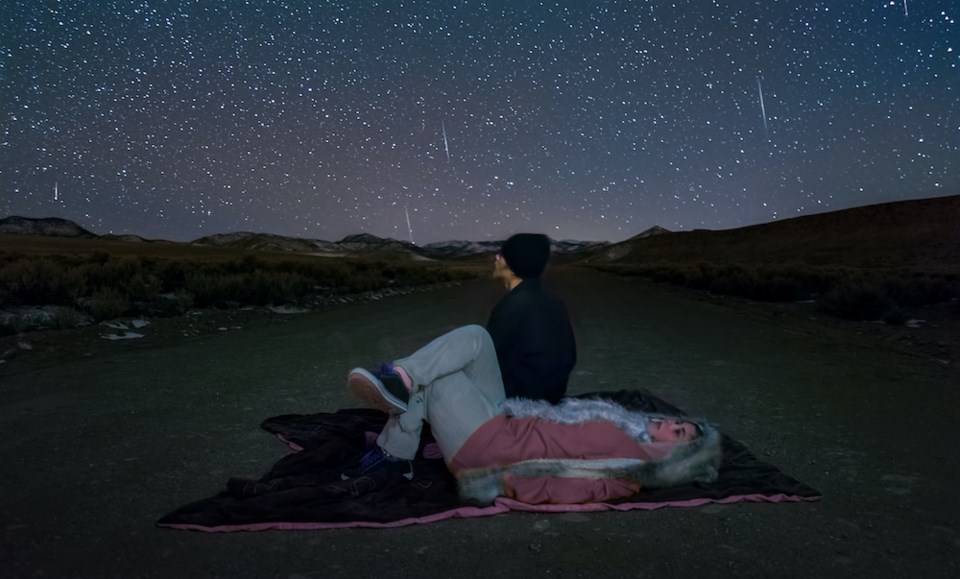Metro Vancouver stargazers hoping to observe the must-see "parade of planets" have several opportunities over the coming weeks.
Rosanna Tilbrook, an astronomer at the H.R. MacMillan Space Centre, tells V.I.A. that the celestial event's moniker, "planetary alignment," is accurate but slightly confusing.
"It's not that the planets are physically lining up one behind the other in space, but rather, they look like they're lining up in our night sky," she tells V.I.A.
"While it's uncommon to see this many planets, the fact that they appear in a line (or really, an arc) isn't uncommon at all. In fact, they do this 100 per cent of the time."
Tilbrook says our solar system is a "pretty flat disk that we're viewing from within" and all of the planets orbit the sun in roughly the same plane.
"Seeing the solar system in this way, edge-on, means that the planets only ever move along a thin edge in the sky. We call this arc the ecliptic. When we have many planets in the night sky, all following the ecliptic, it looks like they're lined up," she explains.
Stargazers can observe so many planets because they are all concurrently on the same side of the sun. Venus, Mars, Jupiter, Saturn, Uranus, and Neptune.
"All of them are visible to the naked eye except for Uranus and Neptune, as they're just so far away. Luckily the other four are really easy to spot, even from the city," she adds.
How to spot the "parade of planets" from Metro Vancouver
Venus and Saturn are currently close to each other. Locals should look to the southwest around sunset to see what looks like a "very bright star with a dimmer star next door," Tilbrook describes.
"The bright one is Venus - it's actually the brightest thing in the sky except for the Sun and Moon! Saturn is fainter as it's much further away."
Jupiter and Mars are located in the east right now and also appear quite bright. Tilbrook says you may even spot some of Mars' distinct red hue.
Tilbrook recommends pointing binoculars at the sky if you have some. Stargazers can use them to spot a few of Jupiter's largest moons, and, depending on the magnification, it is possible to see a glimpse of Saturn's rings.
Known as the "Galilean moons," these four of Jupiter's moons are "some of the most fascinating in our solar system," she notes. "One is even thought to have the right conditions to support life."
"They'll appear as points of light through binoculars, but if you monitor them over a few nights, you'll notice them shift positions around Jupiter as they orbit the planet. It's best if you can mount or rest your binoculars on something to keep them steady too."
Venus and Saturn currently set in the west by roughly 8:30 p.m., while Jupiter sets around 4:30 a.m. and Mars is visible all night. The "parade of planets" will continue to be visible through February, although the planets will set earlier heading into and through the month.
Saturn will dip below the horizon just after 6:30 p.m. by the end of February.
How to learn more about the solar system in Vancouver
Locals who want to learn more about the solar system can visit the H.R. MacMillan Space Centre on Wednesday or Friday evenings. The planetarium show takes guests on a tour of the planets and the observatory is open for visitors to take a look through the telescope.
"If the weather is good, you'll be able to get an up-close view at some of the planets," Tilbrook adds.
The Metro Vancouver weather forecast includes several clear nights thanks to a blast of frigid but dry Arctic air seeping in from the B.C. interior. V.I.A.'s Downtown Centre Weatherhood station shows mostly dry conditions through the week starting on Monday, Jan. 20, with highs ranging between 5 C and 6 C and overnight lows dipping between freezing and 2 C.
The H.R. MacMillan Space Centre is located in Vanier Park at 1100 Chestnut St. It is open Monday, Tuesday, and Thursday from 9:30 a.m. to 4:30 p.m., Saturday and Sunday from 9:30 a.m. to 4:30 p.m., and Wednesday and Friday evenings from 6:30 p.m. to 11:30 p.m.
Stay up-to-date with hyperlocal forecasts across 50 neighbourhoods in the Lower Mainland with V.I.A.'s Weatherhood.



